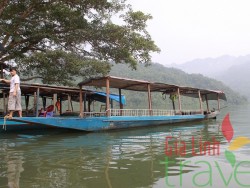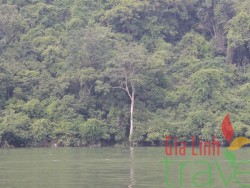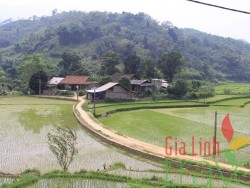Ba Be
Ba Be Lake and National Park


Ba Be lake

Ba Be lake
Ba Be is Vietnam’s largest natural lake and is now the centerpiece of an intensive National Park. The park and the surrounding area is limestone USA, so lakes, waterfalls, caves and peculiar rock form ations abound. The whole area is richly forested and home too many ethnic minority communities.
The National Park is covered by tropical and semi-tropical evergreen monsoon forest. The bio range is rich – 50 animal species, over 400 vegetation and lots of species of insects, reptiles and birds. The ten severely endangered animals in the park include two primates, the Black Gibbon and the Tonkin’s ‘snub-nosed’ monkey.
The latter is likely one of the world’s rarest species and getting ready to extinction. Plants and Fauna International is operating with the park authorities and other agencies to avoid wasting this attractive creature.
The lake itself is truly 3 lakes linked through wide channels. Overall, it’s about 7km lengthy and a kilometre throughout at its widest point, and accommodates around fifty species of freshwater fish. The outside is just about at all times calm, making a boat trip a peaceful experience. In addition, there are islands and caves to visit.
Throughout the park’s boundary there are a few small villages inhabited via individuals of the Tay, Red Dao, Coin Dao and White H’mong ethnic minorities.
On the other hand, the vibrant costumes typical of these types of teams are seldom in evidence with the exception of performances and demonstrations for tourists.
Probably the most villages offer basic, but rather comfortable, homestays. Another is the park’s guesthouse, which provides fundamental accommodation only. In different places, there is limited local standard lodging in Cho Ra town, about 18km away outside the park.
Ba Be can handiest be reached through street – the 250km adventure takes between six and 8 hours. The street gets rough alongside the latter section, however the superb surroundings compensates.
An interesting stop en-course is Thai Nguyen, a centre of heavy trade according to steel manufacturing, and the not going home of the Museum of Nationalities of Vietnam. It supplies an informative overview of the rustic’s many ethnic minorities, particularly helpful for visitors that have not already visited Hanoi’s superb
Ethnology Museum
Additional north is Cao Bang province, a remote area on the border with China. Cao Bang is sparsely populated. It has only a few large settlements however a few ethnic groups in villages hardly ever suffering from tourism.
The limestone ‘karst’ surroundings is attractive, unspoilt and fich in bio-diversity. Few guests project additional north than Ba Be, so Cao Bang vies with the far off northwest as one of the best places to peer in point of fact authentic ethnic minority lifestyles styles.
From Cao Bang, it’s imaginable to loop round to the south via the border the town of Lang Son to Quang Ninh Province and Ha Long Bay. On the other hand, the road is negative, and the scenery is not particularly fascinating.
